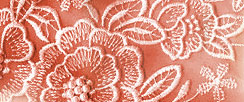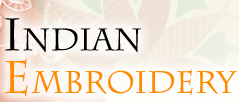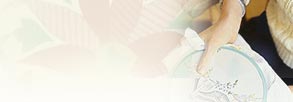
Chikankari was nurtured in Uttar Pradesh and primarily in Lucknow. The
work is done on very fine muslin and now on georgette and chiffon and
other fine fabrics. It is more suited for the outerwear but these days
there are certain exclusive creations using Chikan work in Cushion
covers, pillow covers and table linen. Partition curtains with the
chikan embroidery are fast gaining ground.
History of Chikankari
Traditionally Chicknkari is the white thread embroidery done on the
white muslin or mulmul. The word chikan comes from the Persian word
Chakeen meaning making delicate patterns on the fabric.
The art is said to be introduced by Noorjahan the beautiful queen of
Emperor Jahangir. She is said to be an expert in embroidery and inspired
by the Turkish embroidery. According to Megasthenes, the chikan
originated in East Bengal. He mentions chikan, the florals on fine
muslins in 3rd century BC. The craftsmen believe that the origin goes
back to the time of Prophet. It is believed that while he was passing
through a village in Uttar Pradesh, he requested a villager for water.
On being offered that, he gave the art of Chikankari to the poor
villager as an art that will never let him go hungry.
Process and Stitches of Chikankari
Whatever be the origin, the intricacy and the patterns remind you of
the fine marble carvings and jalis. Today the apart from the white
muslin, light tinted fabrics are used. The thread is prefered white. The
most commendable part of chikankari is the open work ground, an effect
of drawn thread work is achieved without drawing out any.
The most common motif used is that of a creepers. Floral motifs may
enrich the entire garment or just one corner. Among the floral motifs
embroidered, the jasmine, rose, flowering stems, lotus and the paisley
motif are the most popular.
There is simply no match for the shadow work involved in the chikan. In
this the herringbone stitch or Bakhiya as called locally is worked on
the wrong side of the cloth. Looking on the right side the effect is
that of the shadows between the double running stitch. Another variation
of shadow work is created by cutting the patterns in the same fabric as
the base material and stitching it on the wrong side.
There are other stitches to give different stitches. The tiny raised
flowers are made with stitches resembling French knots. The raised
effect is evened off using the simple stem stitch called Rahet. Various
effects can be created using a variety of stitches and combination.
Mainly buttonhole stitch (Hool), running stitch, and chain stitch
(Zanzeer) are used to give the fillers and yet not give it a cluttered
appearance. The jali or the lattice created by the thread tension on the
cloth is most remarkable.





